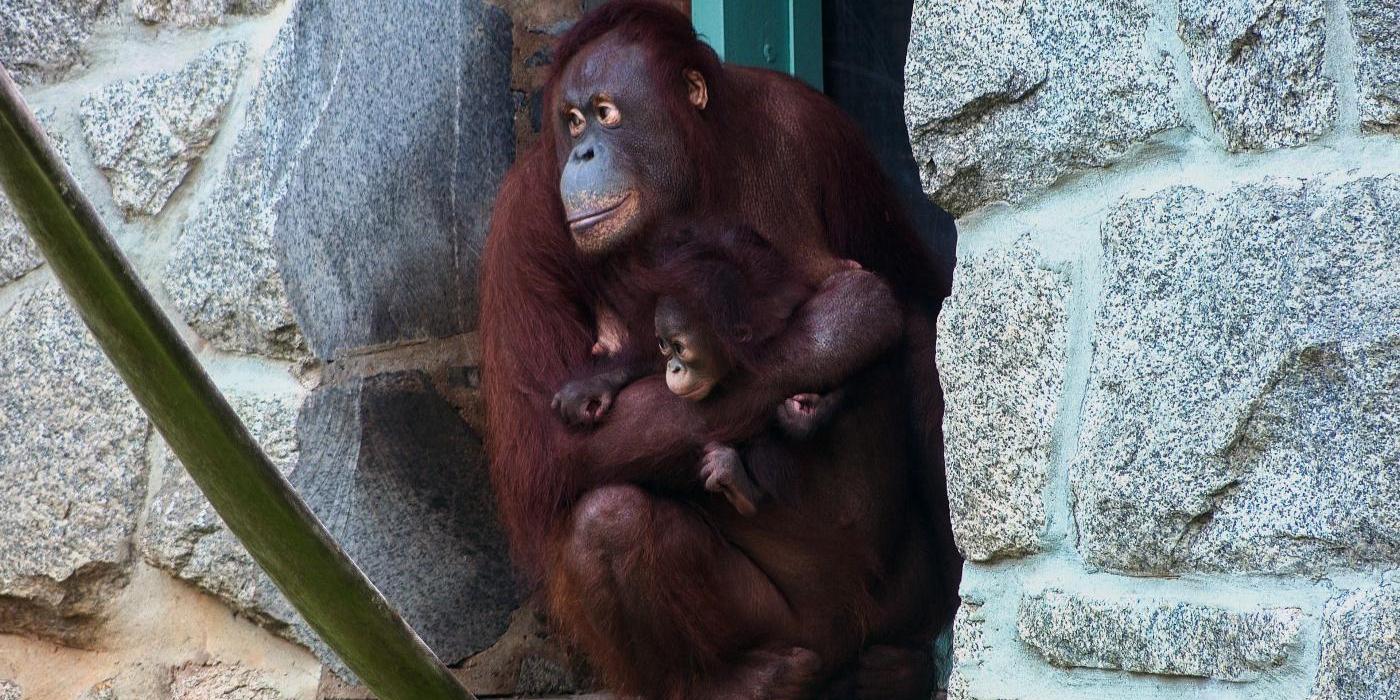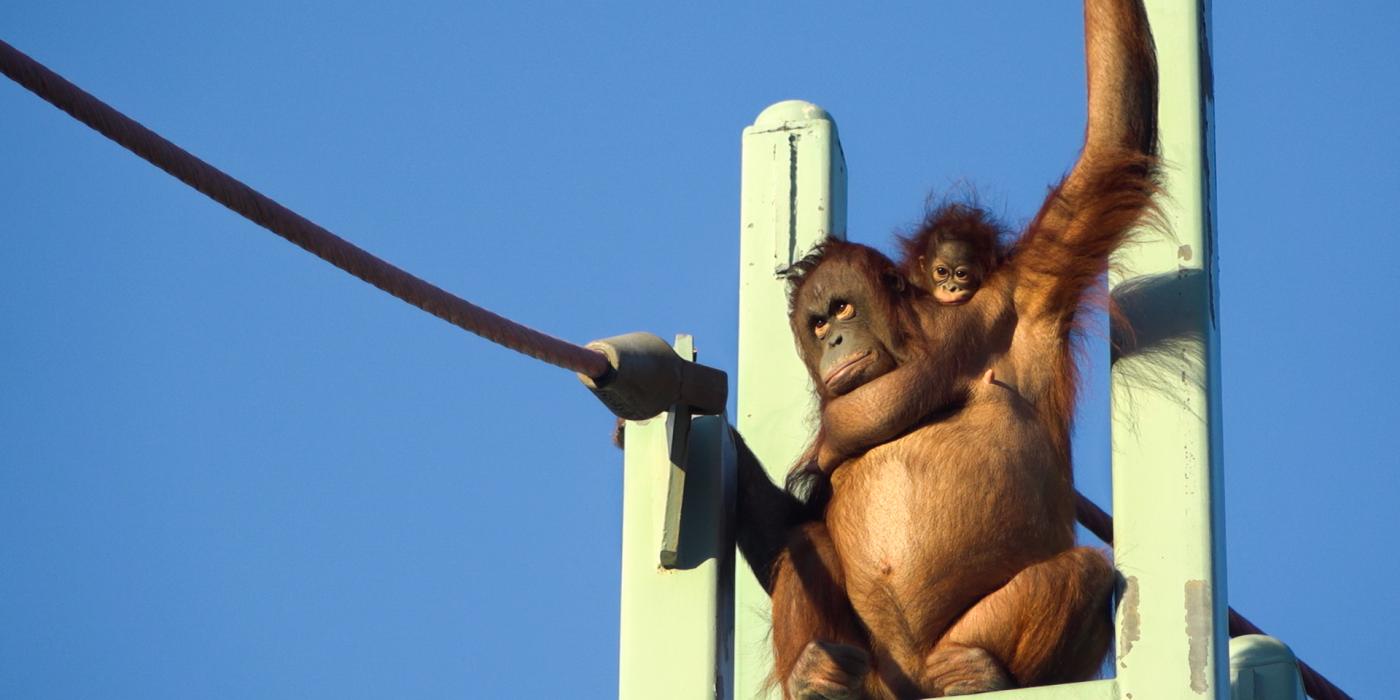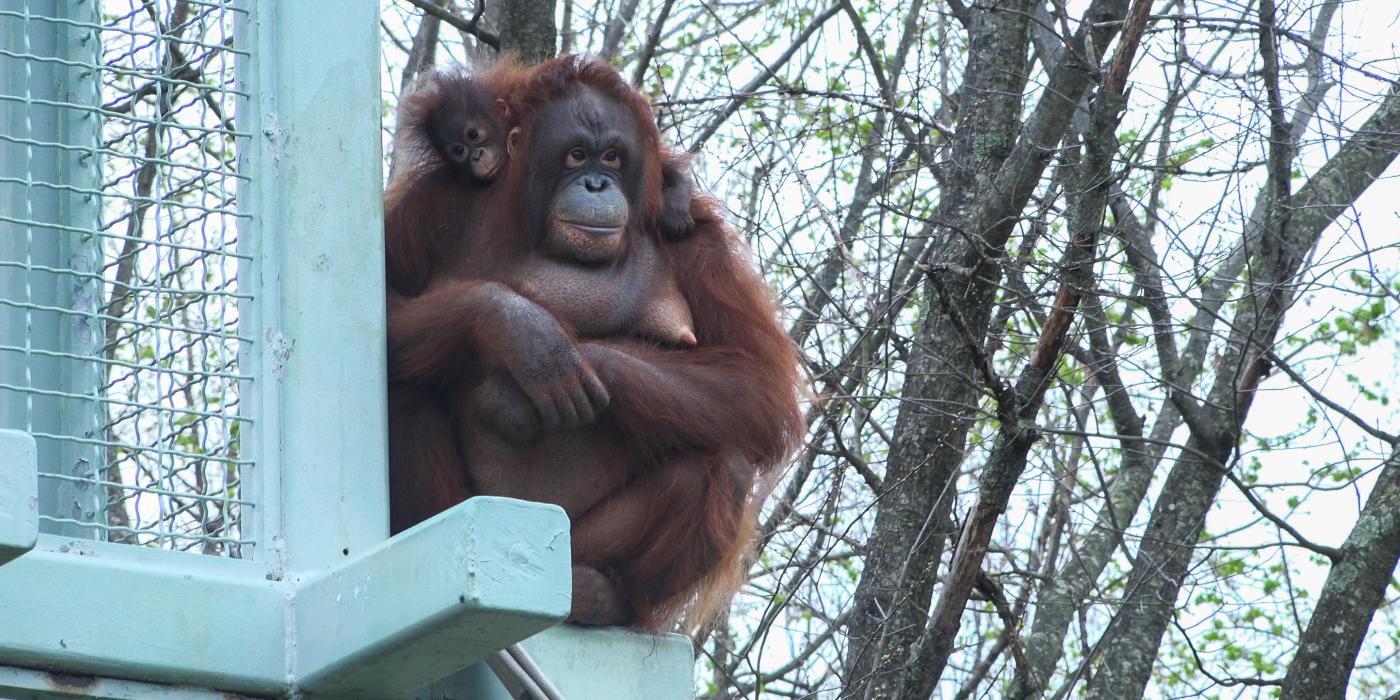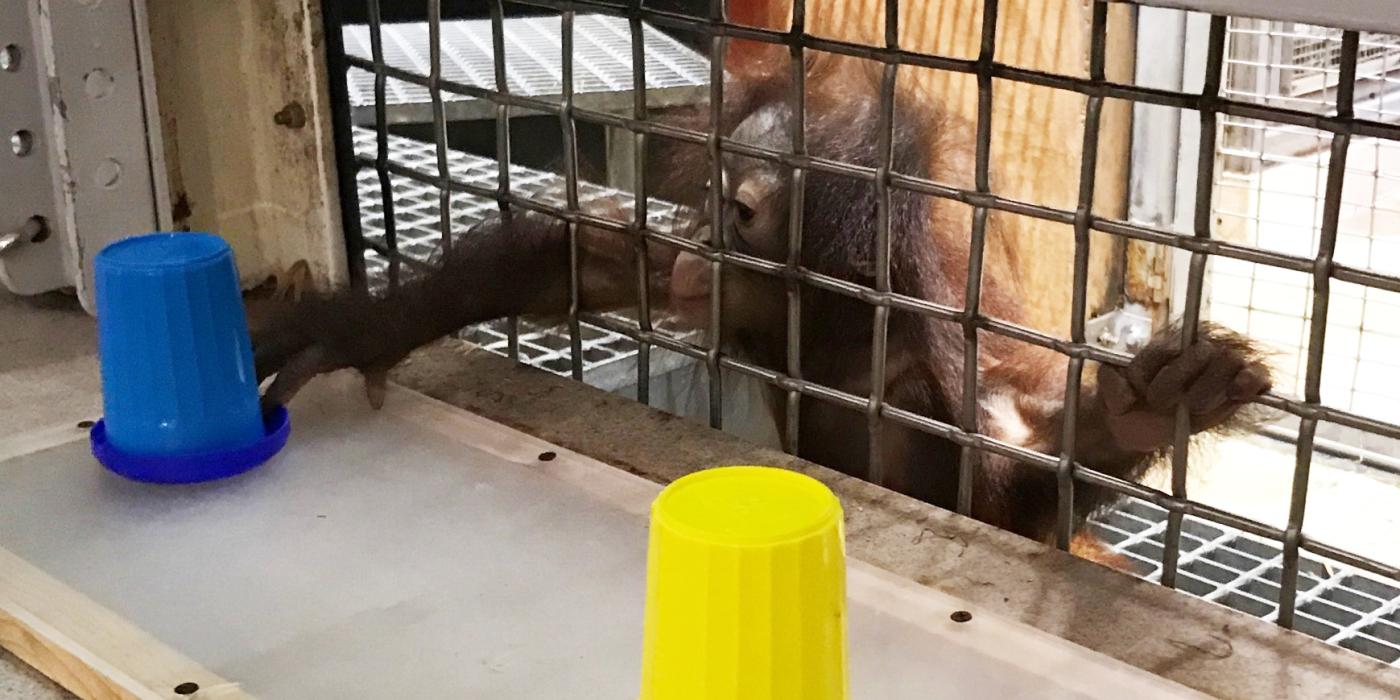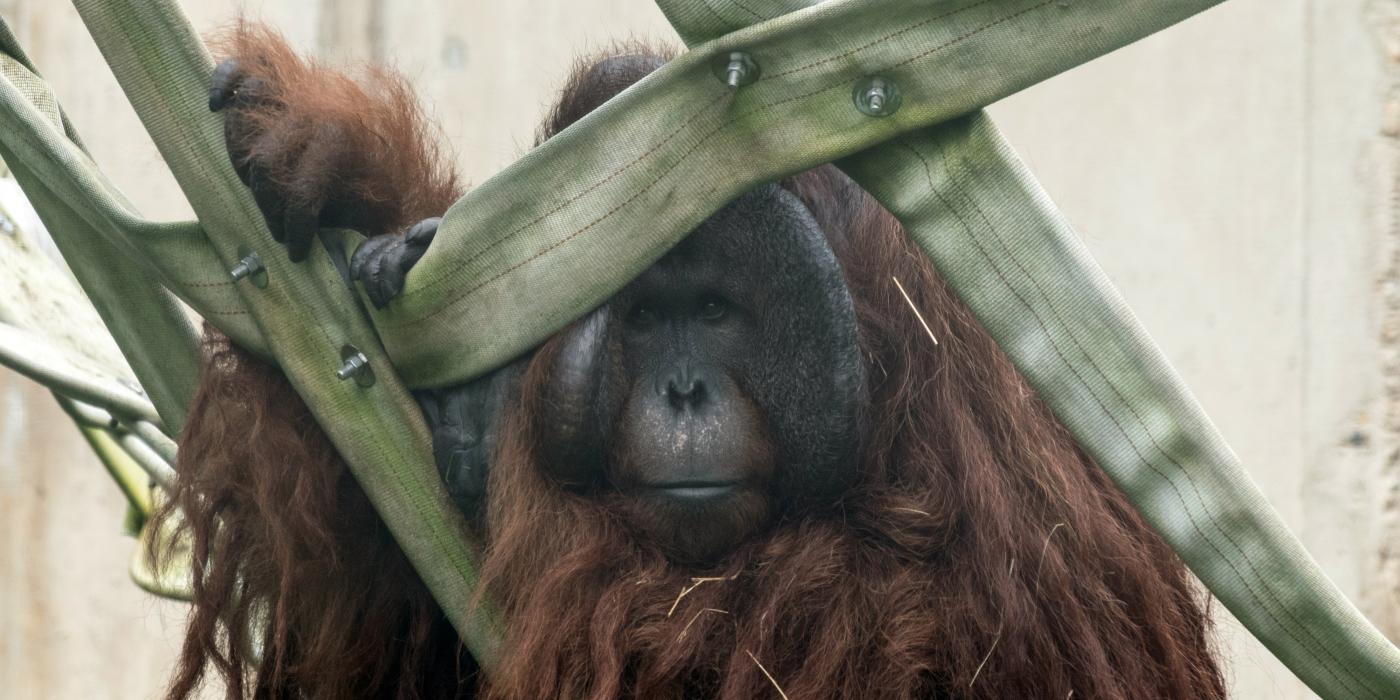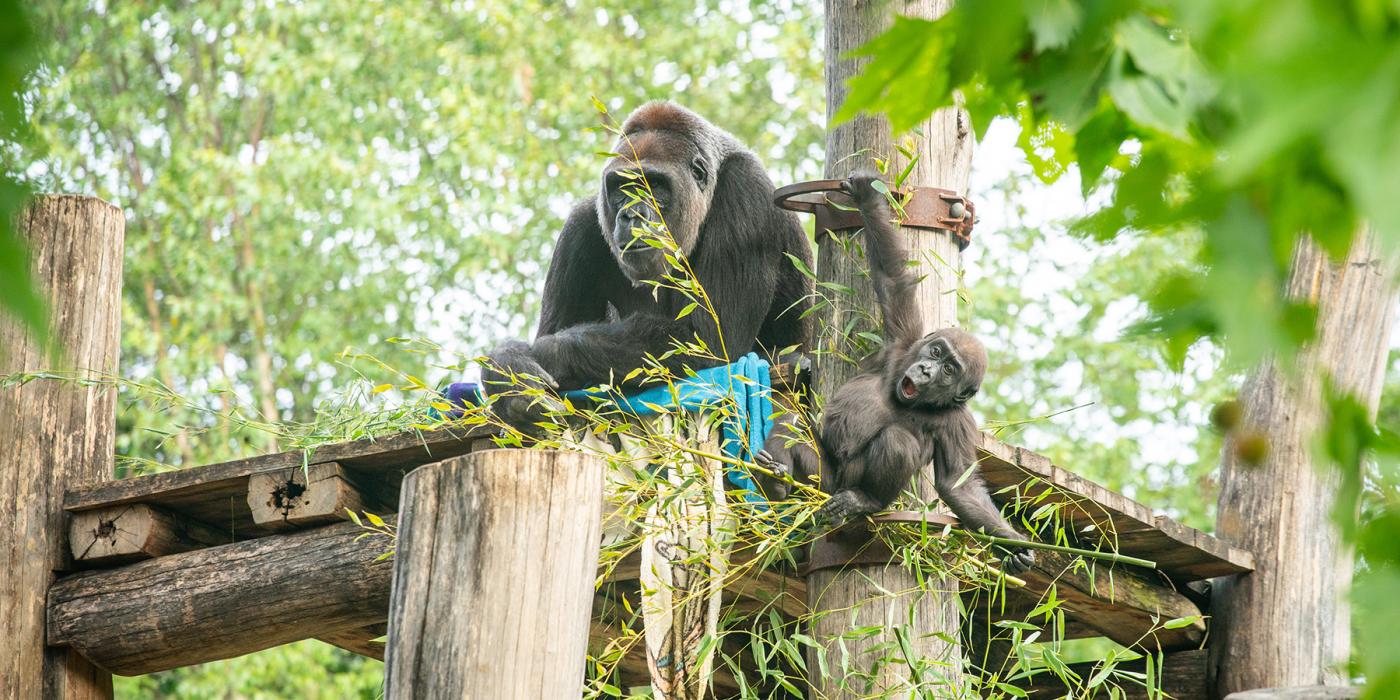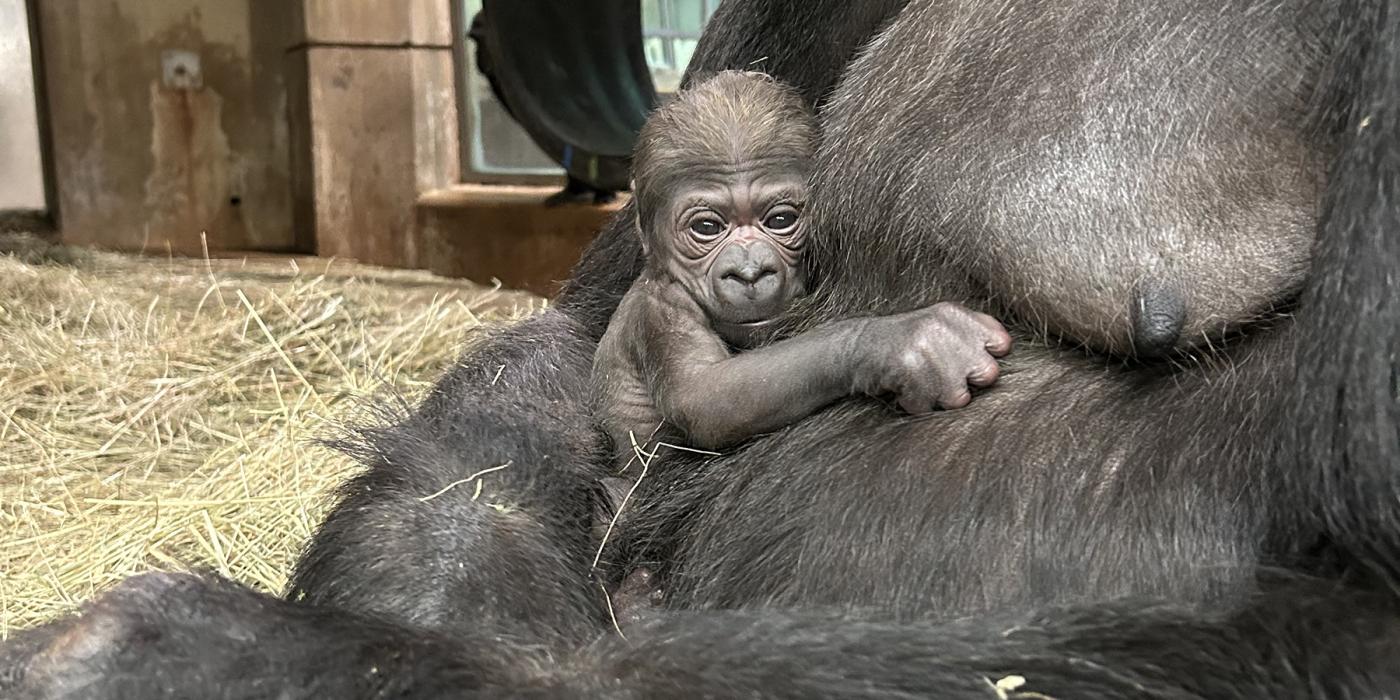Orangutan Infant Redd Explores His Surroundings
This update was written by primate keeper Erin Stromberg.
Our Bornean orangutan infant, Redd, is 9 months old! Although he still sticks close to mom, Batang—and she keeps a watchful eye on him—he’s very active and seems to enjoy exploring his surroundings. Much of the exhibit enrichment is located near the top of the exhibit; orangutans are mostly arboreal, after all. Because we want to encourage Redd to climb and exercise his muscles, we’ve modified the Think Tank exhibit to include a mini-swing and a hammock. Although he tries to climb the fire hose, his hands are too small to get a good grasp. In the near future, we’ll be adding some thinner strips of hose so that he can climb and swing, just like the adults do. Plastic sand toys are by far his favorite items to play with; they’re lightweight and make a lot of noise when he bangs them around the enclosure.
Redd has also taken a liking to the variety of puzzle feeders that our adult orangutans receive every day. By the time Redd gets to the enrichment, however, the adults have usually picked out all of the treats. He gets his nutrition primarily from Batang’s milk and will for quite some time; orangutan infants nurse for six to eight years. Still, that doesn’t stop him from sampling mom’s food! Whenever we make fruitsicles for the apes, the adults usually leave a little bit left over and Redd can sneak a taste.
Now that Batang frequently crosses the O-Line with Redd in tow, she spends about half her time with Bonnie and Kyle (Redd’s father), and the other half with Iris and Kiko. Bonnie continues to be intrigued by Redd and is a terrific playmate for him. She’s also very patient when he puts his fingers in her mouth or tugs on her hair. Occasionally, Redd will crawl on top of Bonnie while she’s laying down, and she will stay perfectly still so as to not alert Batang and cut their cuddle time short.
Keepers continue to monitor Redd’s teeth closely for the orangutan tooth development study. As we mentioned in our last update, he has incisors on the top and bottom, and recently his pre-molars on the top and bottom have started to emerge. Usually, the only time we can catch a glimpse of his teeth is when he yawns in the morning! Looking ahead, one of the next big milestones is training him to open his mouth on cue—a behavior that all of our adult orangutans are trained to do. We want Redd to be comfortable around the keepers, so we reward him with food every time he approaches us near the mesh. All of our animals voluntarily participate in training, so we want him to make that connection of doing a behavior and receiving a reward. Ultimately, however, we will be taking our cues from Batang—she’ll indicate when she’s ready to do a joint training session with Redd.
This story was featured in the July 2017 issue of National Zoo News. Enrichment allows animals to demonstrate their species-typical behavior, gives them opportunity to exercise control or choice over their environment and enhances their well-being. Learn more about the Zoo’s Animal Enrichment and Training Program.Related Species:

